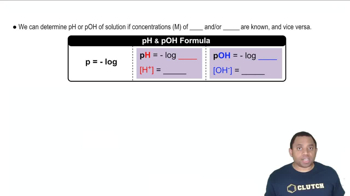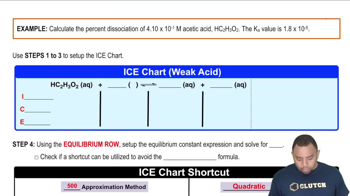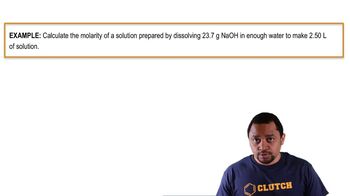Here are the essential concepts you must grasp in order to answer the question correctly.
pH and pOH
pH is a measure of the acidity or basicity of a solution, defined as the negative logarithm of the hydrogen ion concentration. A pH of 10.0 indicates a basic solution, where the concentration of hydroxide ions (OH-) is higher than that of hydrogen ions (H+). The relationship between pH and pOH is given by the equation pH + pOH = 14, allowing us to calculate the pOH and subsequently the concentration of hydroxide ions in the solution.
Recommended video:
Dissociation of SrO
Strontium oxide (SrO) is a basic oxide that reacts with water to form strontium hydroxide (Sr(OH)2). This dissociation increases the concentration of hydroxide ions in the solution, contributing to the basicity. Understanding this reaction is crucial for determining how much SrO is needed to achieve the desired pH level in the solution.
Recommended video:
Percent Dissociation Example
Molarity and Solution Preparation
Molarity (M) is a way to express the concentration of a solution, defined as the number of moles of solute per liter of solution. To prepare a solution with a specific pH, one must calculate the required molarity of hydroxide ions and then convert this to the mass of SrO needed using its molar mass. This involves understanding the relationship between moles, mass, and volume in solution preparation.
Recommended video:
Calculate Molarity Example
 Verified step by step guidance
Verified step by step guidance

